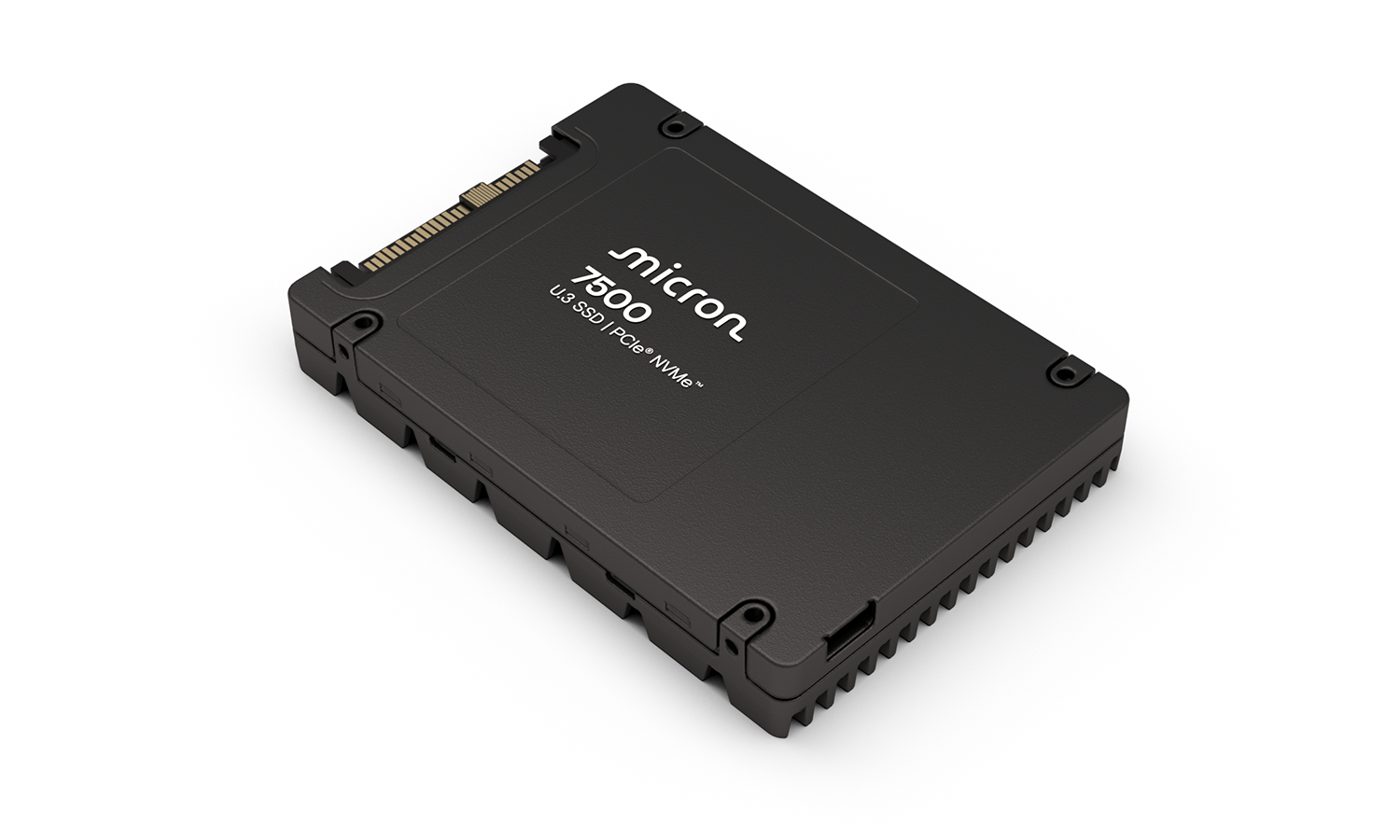Invalid input. Special characters are not supported.
What read write mix does your application run at? What block size? Those simple questions have extremely complex answers in a data center running AI training, relational and NoSQL databases, virtualization /containerization stacks, and so on. Data center SSD specification sheets typically show performance at 4KB 100% random read, write, and 70/30 at queue depth (QD) 256 along with 128KB sequential read and write. But what happens at 16KB 80/20? What happens when your application doesn’t hit 256 queue depth on the drive? Most importantly, how do SSD vendors compare at more realistic block sizes and when latency is considered?
In this blog we’ll look at performance data for Micron’s new 7500 NVMe™ SSD — a mainstream drive we built with real world performance at the forefront. We’ll examine mixed workload performance at 4KB, 8KB, and 16KB block sizes and dive into 6x9’s QoS latency in an 80/20 workload at 16KB block size. We’ll compare performance data to Micron’s previous-gen mainstream NVMe SSD as well as two data center competitor NVMe SSDs.
The results are proof that Micron built our 7500 to not only hit the max spec sheet 4KB numbers, but to be best in class in the types of mixed workloads (both read/write mix and block size) common in today’s data center.
All Mixed Up
Let’s examine 4KB random workloads at a queue depth of 32, representing a drive working at a normal stress level. These range from write heavy at 50% read / 50% write, to read intensive at 90% read / 10% write.

Here we see Micron’s 7500 SSD slightly outperforming the previous gen and clearly outperforming both competitors.
That’s great, but it’s not much of an improvement for the 7500; what happens when we move to larger block sizes like 8KB and 16KB?

At 8KB, the 7500 gains a measurable lead over previous gen and a commanding lead over the competition.

At 16KB, that delta widens a little further and clearly positions the 7500 as the best-in-class mainstream NVMe SSD for mixed workloads.
Quality and Quantity
Another critical performance metric for storage is quality of service (QoS); how long does it take for your SSD to return a request? QoS is measured in a percentile, for example, a 99% percentile latency of 1 millisecond means 1% of your IOs took longer than 1ms. In large data centers with many thousands of drives pushing many millions of IOs per second, 6x9’s latency becomes critically important.
Online transaction processing, recommendation engines, real-time analytics, artificial intelligence, content distribution and financial trading are examples of workloads that benefit from low latency. Not just for hyperscalers, but also traditional enterprise data centers running databases. Both must deliver on service level agreements (SLAs) with their customers — milliseconds matter.
Let’s examine an 80% read / 20% write workload with 16KB IOs at queue depths ranging from 1 to 32.

This plot shows 6x9’s read latency on the Y-axis and IOPS on the X-axis. Higher performance is characterized by being lower on the Y-axis and further to the right on the X-axis. Each dot on the line represents a queue depth from 1 to 32. We set max latency on the graph to 4ms to increase the resolution of the comparison. This cuts off the QD32 metric of Competitor B (8ms).
Here we see significant decrease in 6x9’s latency from Micron’s previous gen to the 7500. We also see that the 7500 now beats the previous best-in-class drive at every queue depth.
Competitor B has slightly lower latency below QD8, but that is a symptom of much lower performance. Above QD8, Competitor B sees a sharp increase in QoS latency.
Mainstream NVMe for the Real World
The Micron 7500 SSD is the most advanced mainstream PCIe® Gen4 data center SSD and first with 200+ layer NAND, providing superior QoS and performance to its competition1.

Micron 7500 NVMe data center SSD
Creating a new class of sub-1 millisecond drives
The Micron 7500 NVMe SSD is the first mainstream data center SSD to use 200+ layer NAND, and this leading technology helps to deliver excellent performance and QoS on a broad range of mixed workloads and IO sizes.
Micron built the 7500 SSD with 232-layer NAND — the world’s most advanced, mass production NAND in the world today — and combined it with our advanced controller and firmware to deliver incredible results.
The Micron 7500 SSD addresses QoS needs with industry-leading, 99.9999% (6x9s) 4K read-intensive 4K workload latencies under 1 millisecond while delivering over 1 million IOPS.
The Micron 7500 also excels in common, mixed, random workloads to help drives improve performance in popular databases, including Oracle, MySQL, RocksDB, and Microsoft SQL Server. All databases are multi-threaded, and that means multiple queues go out and are waiting for the slowest operation before results can be delivered. That’s where consistent latency makes a huge difference for the user.
Learn more at 7500 product page and contact your sales representative to get them in your lab — and then into production!
Additional information:
Note 1: For Gen4 U.2/U.3 mainstream competitive SSD suppliers with at least 10% data center SSD market share as of August ‘23 as noted in Forward Insights analyst report SSD Supplier Status_Q2/Q3.
Note 2: Queue depth (QD) is the number of outstanding I/O requests per target per thread. In this case, QD 128 is used to as a common comparable QD across competitive drives. For example Microsoft generally uses QD 128 for benchmark performance analysis and to stress the system CPU under test with higher IOPS, for more information see here: https://learn.microsoft.com/en-us/azure/virtual-machines/disks-benchmarks
Note 3: All results from internal testing in Micron’s data center workload engineering (DCWE) labs.

